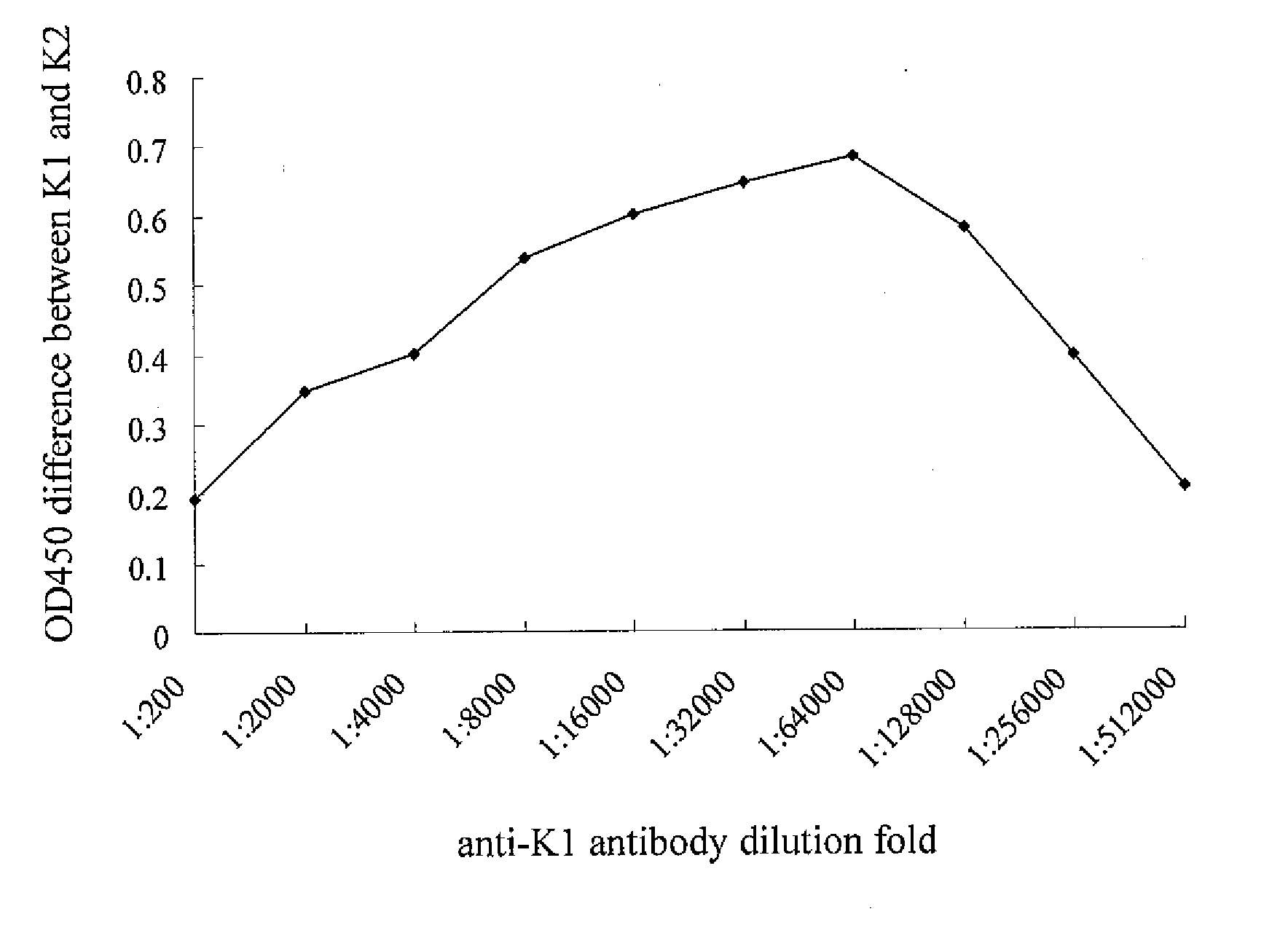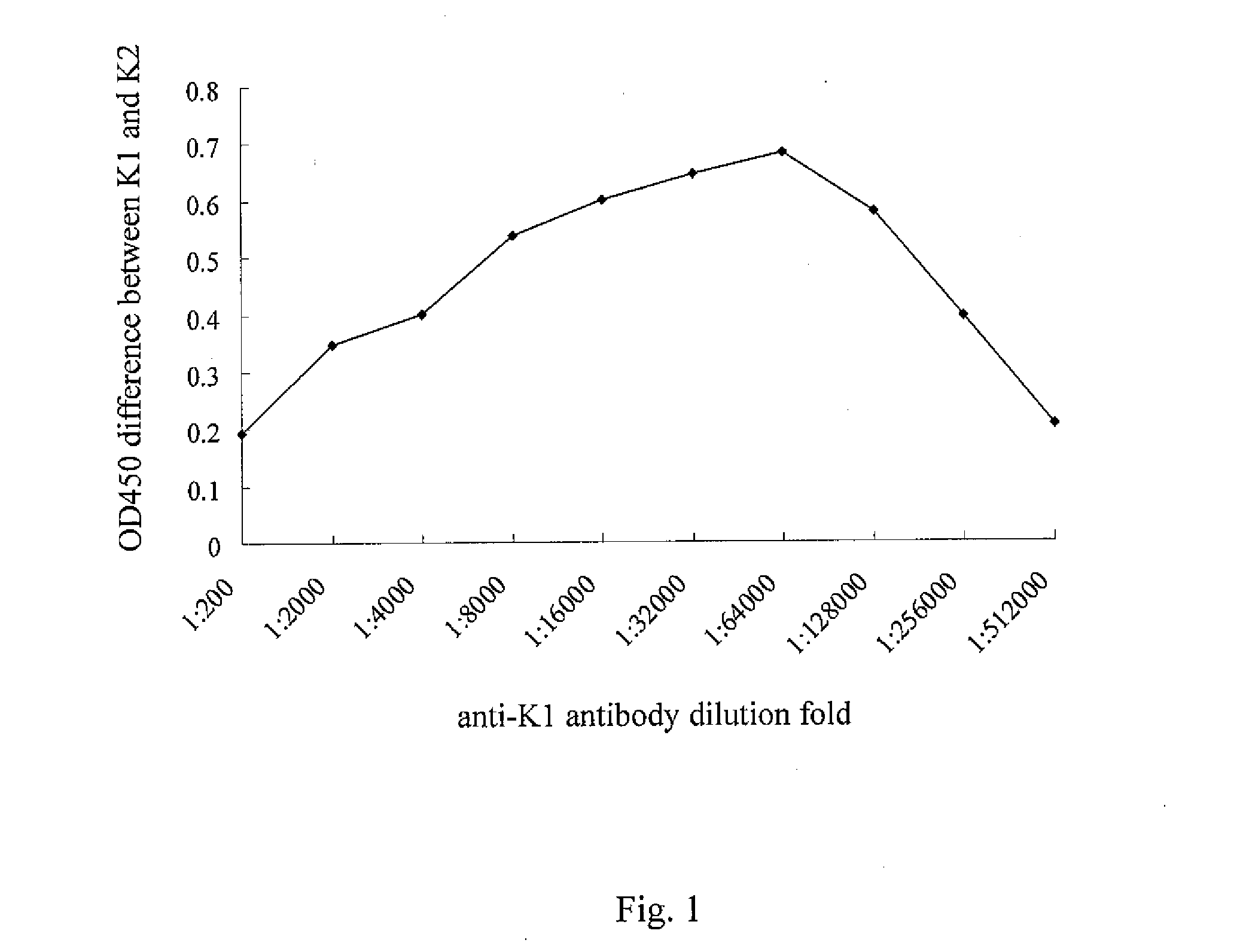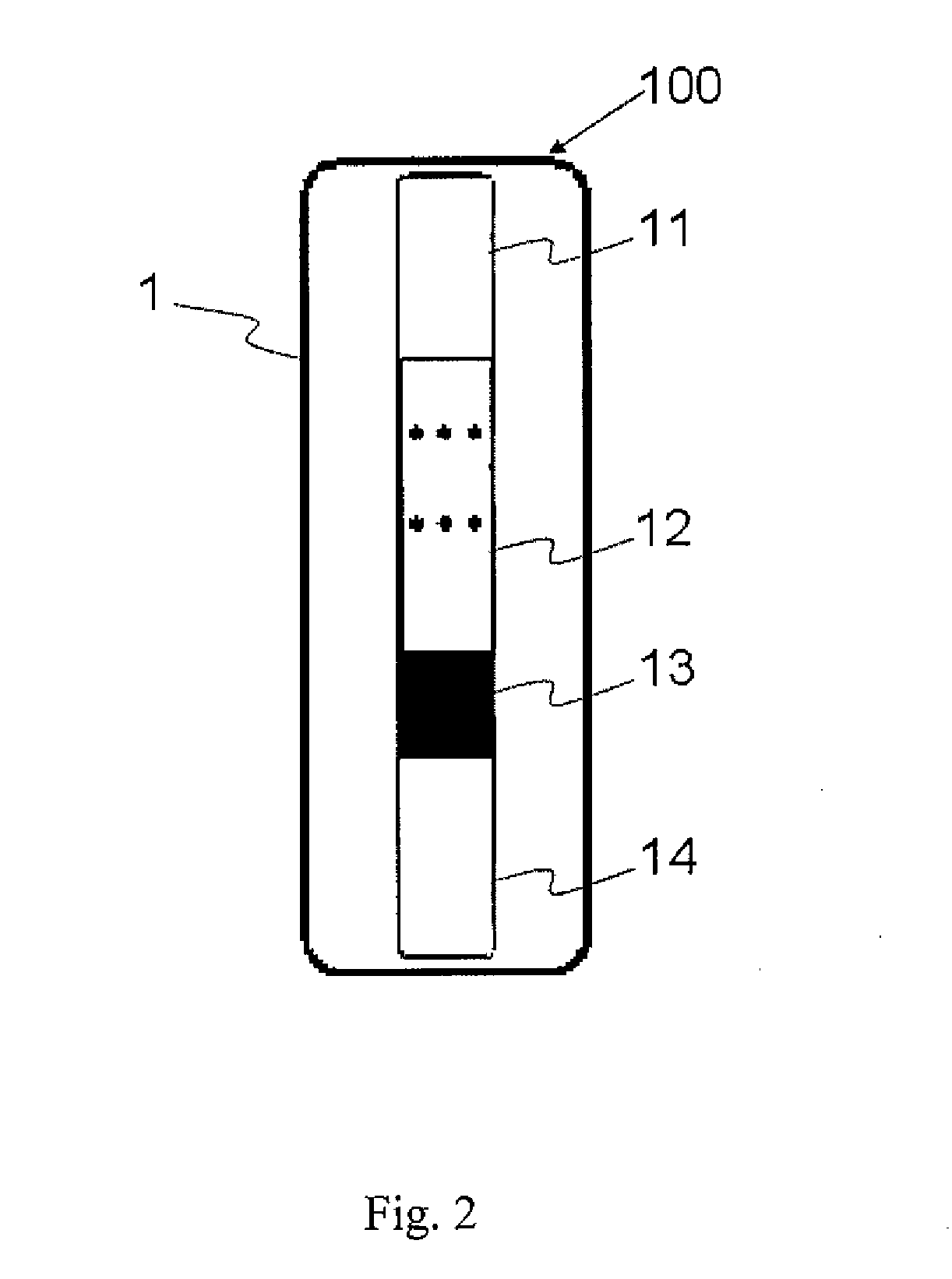Test Kit for Detecting Klebsiella Pneumoniae Serotype K1 and Method Using Same
- Summary
- Abstract
- Description
- Claims
- Application Information
AI Technical Summary
Benefits of technology
Problems solved by technology
Method used
Image
Examples
example 1
Preparation of Anti-Klebsiella pneumoniae Serotype K1 Serum
1-1. Verifying Antigen Purity and Concentration
[0030]Klebsiella pneumoniae serotype K1 was cultured with conventional medium for overnight. After overnight culture, the bacteria were killed by hot water at 70° C., so as to maintain the complete bacterial structures. To determine if the protein purity higher than 90%, SDS-PAGE was performed and thus the total amount of protein was calculated for required concentration (2 mg) of immunization.
1-2. Animal Immunization
[0031]3-5 ml of pre-immune serum was collected from a New Zealand rabbit. The obtained antigen as described in 1-1 was mixed with the Complete Adjuvant, and then the mixture was injected into the animal by hypodermic or splenic injection, and which is the first immunization. The serial immunizations were performed every 2 weeks, and the used adjuvant was replaced with Incomplete Adjuvant. After the fourth immunization was completed, blood sample was collected to per...
example 2
Fabrication of Test Kit for Detecting Klebsiella pneumoniae Serotype K1
1-1. Fabrication of the Interpretation Region of Test Kit
[0037]The purified antiserum (Rabbit anti-K1 IgG) as described in example 1 was diluted with the ideal antibody titer (1:64,000), and immobilized on the nitrocellulose membrane (NC membrane, >30 cm) surface by a printing device. The NC membrane was dried by constant temperature and humidity facilities for 24 hours and carried out the blocking process to form the interpretation region 12 of test kit 100. The interpretation region 12, was also called T region, can be used to detect Klebsiella pneumoniae serotype K1. On the other hand, a control (C region) was designed to monitor whether the test kit functioned normally.
1-2. Fabrication of Immunoconjugation Pad of Test Kit
[0038]Proper amount of antiserum (Rabbit anti-K1 IgG) and colloidal gold (25 nm) were conjugated and concentrated. The prepared antibody (1:64,000) was immobilized on the colloidal pad made o...
example 3
Examination of the Test Kit for Detecting Klebsiella pneumoniae Serotype K1
1-1. Preparation of Specimen
[0040]Bacterial culture suspension or liver abscess specimen was stirred in saline solution to be the tested specimen. If tested specimen was cerebrospinal fluid, urine, sputum, ascites or pleural fluid, then the dilution was unnecessary. If tested specimens were bacterial colonies of Klebsiella pneumoniae serotype K1, 2-3 Colonies were picked and mixed with saline solution.
1-2. Examination Procedures
[0041]One drop of tested specimen was extracted by a pipette and added to the window 22 of test kit 100. After 1-3 min, whether the aggregation of antibody and specimen was occurred can be inspected through window 21, and thus the result can be determined. Compared with the prior art, the test kit of present invention exhibits that the detection process was fast, and the detection process could be finished in 5 min to avoid the false positive results.
1-3. The Results Represented from t...
PUM
 Login to View More
Login to View More Abstract
Description
Claims
Application Information
 Login to View More
Login to View More - R&D
- Intellectual Property
- Life Sciences
- Materials
- Tech Scout
- Unparalleled Data Quality
- Higher Quality Content
- 60% Fewer Hallucinations
Browse by: Latest US Patents, China's latest patents, Technical Efficacy Thesaurus, Application Domain, Technology Topic, Popular Technical Reports.
© 2025 PatSnap. All rights reserved.Legal|Privacy policy|Modern Slavery Act Transparency Statement|Sitemap|About US| Contact US: help@patsnap.com



